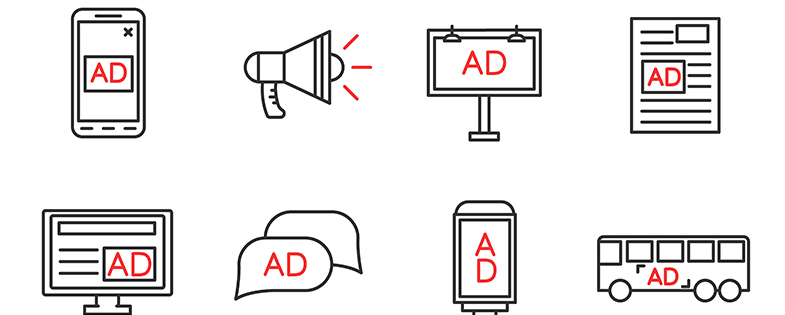

Media 101
by Kyna Steinfurth, Media Director
For years Fruchtman Marketing has been invited annually to speak with the senior marketing class at our local university. We offer insights into marketing to assist these students with their marketing plan thesis. We quickly realized that what these students needed most was a Media 101 on how to strategize, and plan, the paid marketing portion of their project. We feel that understanding how a media professional thinks through the planning process of a media campaign is beneficial for everyone to know; whether you handle your marketing in-house or via a third-party agency.
The first thing we need to know is who is the target audience? Do we need to promote bridal to first-time bridal consumers? Fashion jewelry to affluent, female self-purchase consumers? One-of-a-kind pieces that are geared more toward the funky, artsy crowd than the conservative country club member?
We need to then research the target demographic and determine what they like to do, where they live, their media usage habits. While every consumer is different, some generalizations can be made about what media they interact with better than others.
- Millennials (born early 1980s to early 2000s): While television still attracts the highest number of them each week, they spend more time on their mobile devices than watching TV. Almost 40% of the time they spend watching TV is time-shifted – meaning that they record a program and watch it later. In fact, the average Millennial spends more time on their mobile device than watching TV and listening to radio combined.
- Generation X (born early 1960s to early 1980s): Again, television attracts the highest percentage of this generation, but it is closely followed by digital usage. They have an active online lifestyle with regular usage for social media, internet research prior to purchase and digital streaming of movies and television shows.
- Boomers (born 1946 to 1964): This generation was the first to watch TV on a consistent basis and continues to spend the most amount of time doing so. They are also less likely to be time-shifted viewers. That said, Boomers are spending more time online than ever before. They are more likely accessing the internet via desktops instead of mobile devices, and very likely to still have landline phones at home.
- Silent Generation (born mid 1920s to early 1940s): While this audience is very faithful to their newspaper and magazine publications, approximately 70% use mobile devices. They are also heavy TV viewers.
We then have to research the market and determine what media outlets would work best to reach the target audience. There are pros and cons to every media option and you need to be aware of them. Several examples are as follows:
- Broadcast Television
- Broad reach, visual impact, creditability with consumers
- High costs, low frequency, additional production costs, wasted reach, distracted viewers, DVR users
- Cable Television
- Visual impact, affordability, ability to geo-target
- Fragmented audience (multiple vendors), production cost, distracted viewers, DVR users
- Radio
- High frequency, low production cost, easy to change messaging
- Low reach per station, Channel flippers (long commercial breaks), wasted reach
- Print
- Visual impact, high attention levels, loyal readers
- Reduced circulation, older demographic
- Social
- Low cost, targeting capabilities, viral nature
- Time and effort, high risk for negativity, short exposure time
- Digital
- Targeting capabilities, reach consumers at any time
- Low reach, privacy issues, oversaturation, fraud
When it has been determined what consumers need to be reached and how to reach them, the appropriate media reps are contacted and schedules are negotiated. A document, typically called an RFP (Request for Proposal) is created to share with the reps that gives them all the necessary data; target demographic, timing, available budget, etc.
We thoroughly review the information provided by the reps and double check that they used the right information provided. We negotiate to ensure that the best rates are provided and that well added value promotions can be done. When this is done we present to the clients the schedule that we feel will provide the best exposure to the target audience.
Planning a media campaign is about specifying who you want to reach and putting together a schedule that maximizes the reach and frequency of message to that audience. Every market and every advertiser is unique and while generalizations can be made, media professionals need to put as much time into researching who they want to reach and where to reach them; as they do negotiating the actual media schedules.




